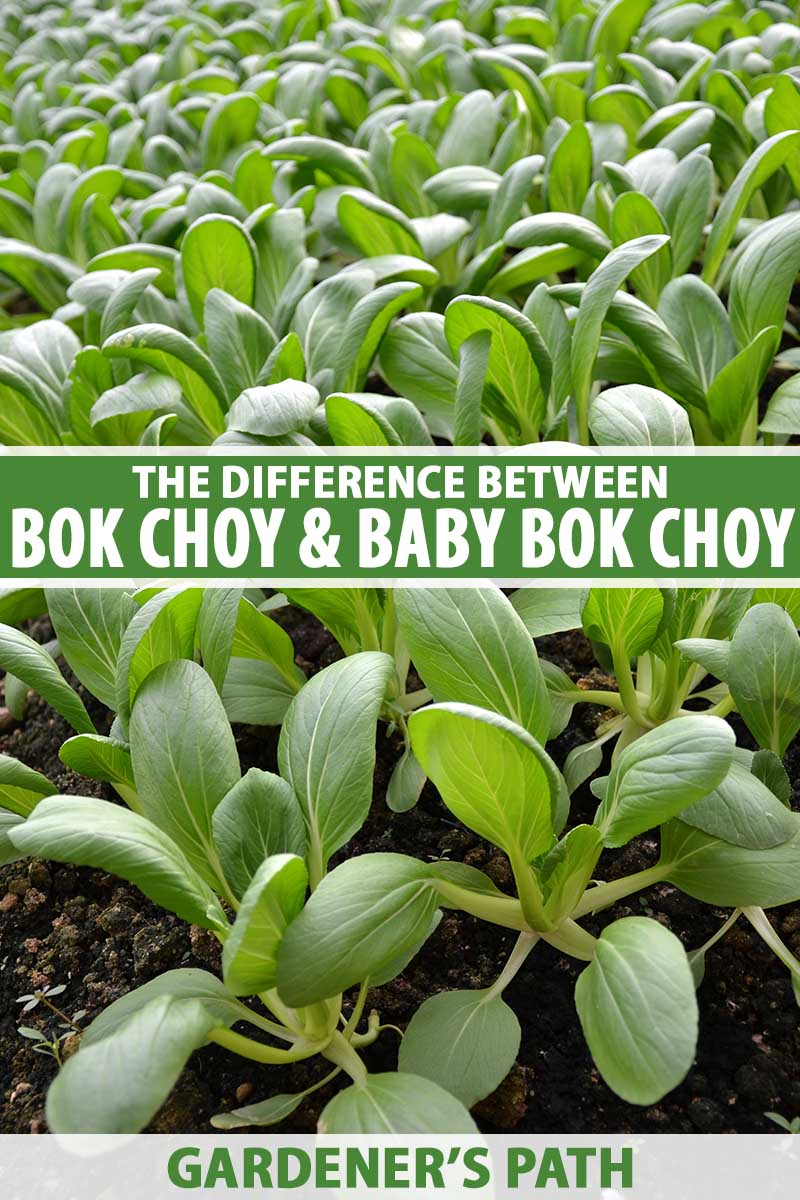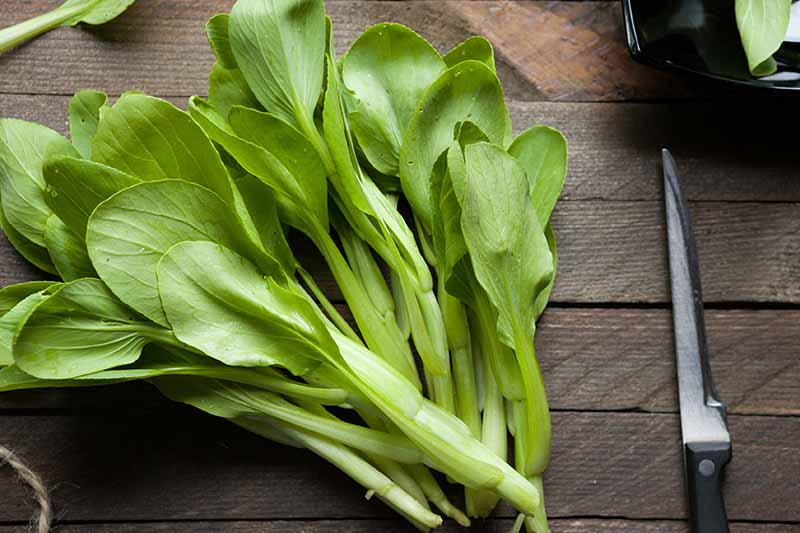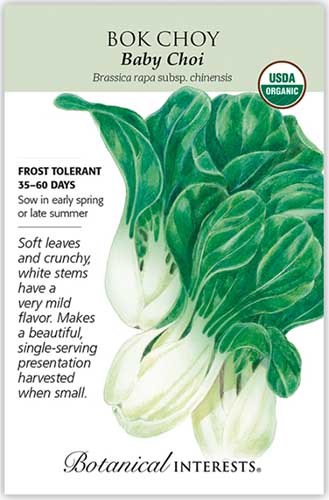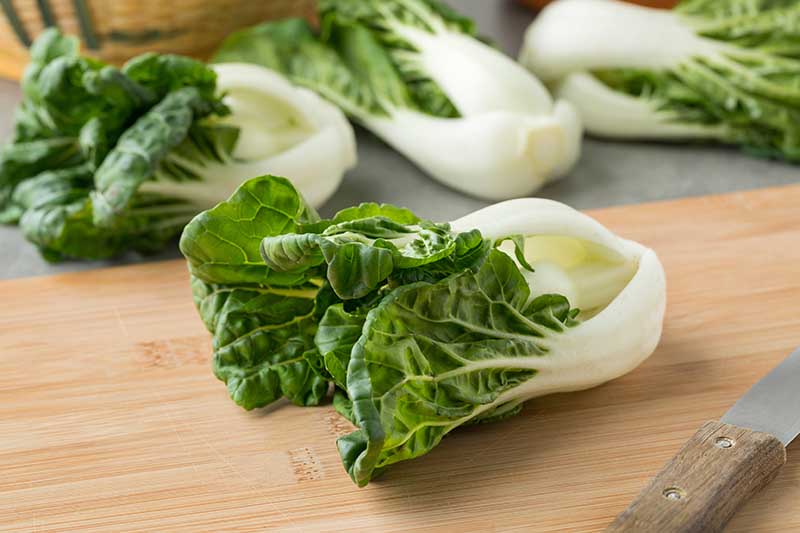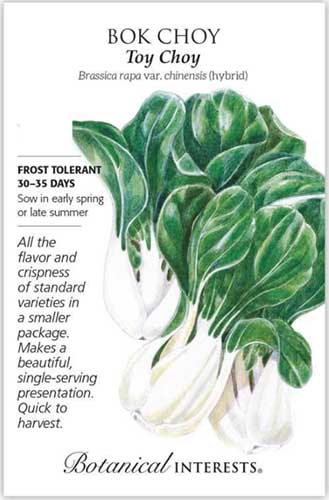But then you got home and realized the recipe actually called for baby bok choy. Your heart sinks. Did you just purchase the wrong thing? Will your recipe be ruined? What the heck is the difference between the regular and baby versions of the plant, anyway? We link to vendors to help you find relevant products. If you buy from one of our links, we may earn a commission. In this article, we’ll explore the mystery of the baby versus the grown-up version of Brassica rapa subsp. chinensis. Here’s what you’ll discover:
What’s the Difference?
If you’re like the hypothetical home chef above who bought regular bok choy instead of the baby version, you’ll be relieved to find out that you can use full-grown Chinese cabbage in your recipe. But what is the baby version, anyway? It can mean two things. First, the term “baby bok choy” can refer to regular pak choi picked when its leaves are small and immature – about 30 to 35 days after germination instead of 50 to 70 days. This type of pak choi has a milder flavor than its fully mature counterpart, and the leaves are more tender. Immature pak choi hasn’t fully developed those long, crisp stalks yet – they’re much shorter than they will be later on – so it tends to have more leaves than stalks. If the deliciously mild greens are your favorite thing about this veggie, picking or purchasing the immature version is the way to go. The second thing this moniker can refer to denotes the many dwarf varieties that are available to growers. Since these don’t grow as large as regular varieties, they look like baby versions even when they are mature, hence the name. These are also sometimes called “baby leaf” varieties.
A Few Favorites
If you’re trying to find pak choi cultivars to grow that are especially well suited to early picking, or you want to know which dwarf varieties are worth trying, we’ve got you covered. Here are our favorite candidates. Each one is suited to USDA Hardiness Zones 2 through 11, but some are more tolerant of warm weather than others, which we will note below. It’s all very adorable and probably difficult to do, and ‘Extra Dwarf’ pak choi would almost fit in a tiny cooking kitchen, because it grows just two to three inches tall and wide. ‘Baby Choi’ When grown to partial maturity, this variety is excellent for container growing, since you’ll only grow it until it’s about five to six inches tall before harvesting. The plant will delight you with its crisp yet tender white stalks and vibrant, verdant leaves. You can find packets of 240 organic seeds online from Botanical Interests.
Extra Dwarf
My five-year-old son loves to watch YouTube shows about tiny cooking, wherein people create extra-miniature food in teeny tiny kitchens. It’s also easier to grow in warm weather than regular pak choi, so those of you in warmer climes can enjoy the adorably tiny ‘Extra Dwarf’ without worrying about bolting or heat stress. At full maturity, ‘Toy Choy’ is just five inches tall and wide. How fun would it be to serve an individual ‘Toy Choy’ to each guest at a table full of friends? The size of a ‘Toy Choy’ plant makes it a tasty, easily prepared side. With its snow-white stems and deep green leaves, it’s sure to amaze your dinner party guests – especially when you tell them you grew it in just 30 to 35 days. ‘Toy Choy’ Plus, ‘Toy Choy’ is ideal for those in warmer regions because it’s more adaptable to warm weather – and less likely to bolt – than other varieties. Find packets of 65 seeds available from Botanical Interests.
Switch Things Up
Whether you feel like going mini or sticking with full-size Chinese cabbage, you can trust that you’ll get a great-tasting harvest of leafy greens from your garden. And you can use whichever size or type you want in a recipe – regardless of whether it calls for the baby or regular version. Have you ever grown regular or baby Chinese cabbage? Did you enjoy one type more than the other? Let us know in the comments below!And for more information about growing tasty bok choy, check out these additional articles before you go:
Bok Choy Spacing: How Far Apart to Plant Your CropHow to Regrow Bok Choy from ScrapsWhen and How to Harvest Bok Choy
